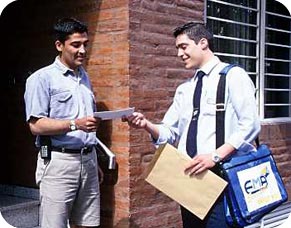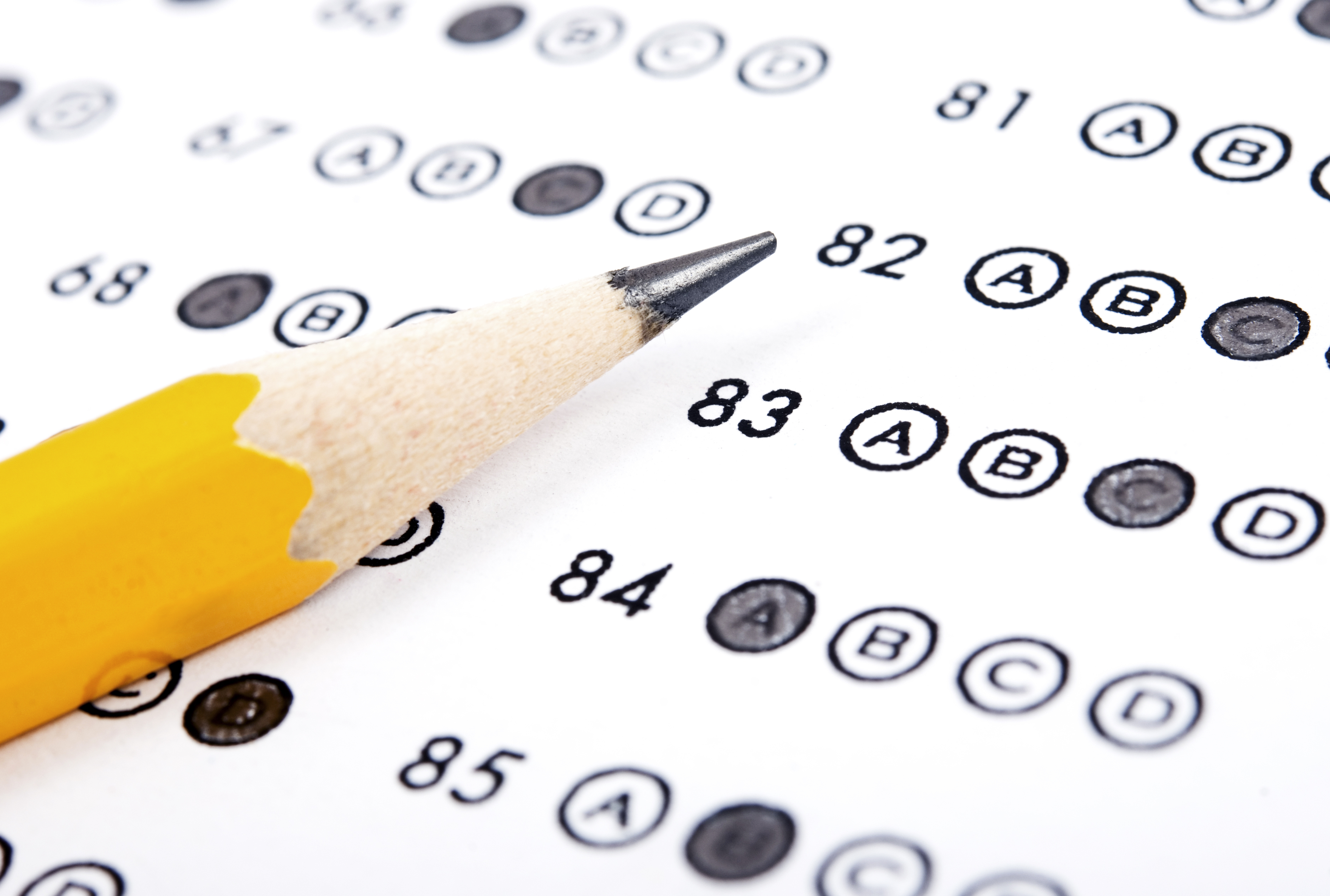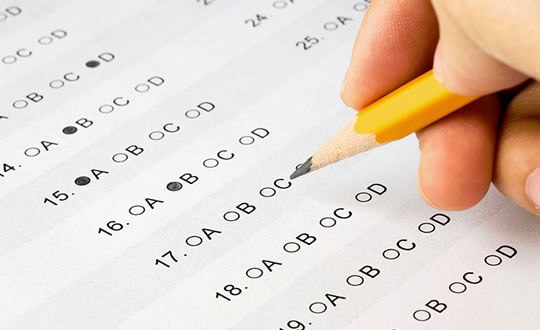
This link shows many conversation & interaction situations. Very useful!
http://www.eslgold.com/speaking/phrases.html

| picture, image | foreground | indoors |
| painting | background | outdoors |
| photograph / photo | in the upper part | artificial light |
| portrait | in the lower part | subdued light |
| landscape painting | in the left part | loud colours |
| worm’s eye view | in the right part | daylight |
| bird’s eye view | in the central part | at night |
| in front of | on the right | in the evening |
| behind | on the left | light colours |
| next to … | in the middle | dark colours |
| from above | from below | high contrast colours |
 The
picture shows three astronauts waiting for takeoff. The astronauts are
wearing bright orange uniforms or flight suits. Two of them have US
flags on their shoulders so they must be American, but I can’t see where
the other one is from. The astronaut nearest the camera looks nervous. I
think he is worried or anxious about the flight. Maybe he is thinking
about what he has to do on this mission, or maybe he is thinking about
his family. Behind him there is a scientist or an official. They could
be waiting for the space shuttle to get ready, or perhaps there is a
problem with the weather and their lift-off has been delayed.
The
picture shows three astronauts waiting for takeoff. The astronauts are
wearing bright orange uniforms or flight suits. Two of them have US
flags on their shoulders so they must be American, but I can’t see where
the other one is from. The astronaut nearest the camera looks nervous. I
think he is worried or anxious about the flight. Maybe he is thinking
about what he has to do on this mission, or maybe he is thinking about
his family. Behind him there is a scientist or an official. They could
be waiting for the space shuttle to get ready, or perhaps there is a
problem with the weather and their lift-off has been delayed. This
is a funny picture. It shows three old ladies picking apples in an
orchard or a garden. They are having a good old time! One of the ladies
is high up on a ladder, picking the apples at the top of the tree. Her
hair is still dark, so I think she is the youngest of the three. The
other two are on the ground. One lady, the oldest, is holding a bucket
or a pail full of red apples. The other woman is also wearing a hat, so
it must be hot. The three of them are smiling at the camera. I don’t
know who is taking the picture, but perhaps it is someone in their
family. I think after they are finished they will use the apples for
baking or cooking.
This
is a funny picture. It shows three old ladies picking apples in an
orchard or a garden. They are having a good old time! One of the ladies
is high up on a ladder, picking the apples at the top of the tree. Her
hair is still dark, so I think she is the youngest of the three. The
other two are on the ground. One lady, the oldest, is holding a bucket
or a pail full of red apples. The other woman is also wearing a hat, so
it must be hot. The three of them are smiling at the camera. I don’t
know who is taking the picture, but perhaps it is someone in their
family. I think after they are finished they will use the apples for
baking or cooking.


Introduction (Writing formal letters and emails)
Writing formal letters is a necessary skill that you need for most ESL or EFL exams at Intermediate Level and above. Examples: - You are given an article to read from a newspaper. You write to the newspaper disagreeing with the article. - You write to complain about something. - You write making suggestions about something. - You write requesting information. - You write giving information. - You write requesting permission. Useful phrases (Writing formal letters and emails) a) Writing formal letters generally: Greetings: - Dear Sir - Dear Madam - Dear Sir/Madam - Dear Mr Brown - Dear Ms Jones etc. Reason for writing:- I am writing in response to your article/advertisement/letter - I am writing with regard to your article/advertisement/letter - I am writing regarding your article/advertisement/letter - I am writing on behalf of Ending the letter:- I look forward to receiving your reply - I look forward to your reply - I look to hearing from you - I am, yours faithfully (if you don't know the name of the person you are writing to) - I am, yours sincerely (if you know the name of the person you are writing to) - Yours faithfully - Yours sincerely Formal English letters are quickly being replaced by email. However, the formal letter structure you learn can still be applied to business emails and other formal emails. Follow these structure tips to write effective formal business letters and emails. Formal Letter Structure: Block Format Formal letters written in block format place everything on the left hand side of the page. Place the your address or your company's address at the top of the letter on the left (or use your company's letterhead) followed by the address of the person and / or company you are writing to placed on the left side of the page. Hit the key return a number of times and use the date. Formal Letter Structure: Standard Format In formal letters written in standard format place your address or your company's address at the top of the letter on the right. Place the address of the person and / or company you are writing on the left side of the page. Place the date on the right hand side of the page in alignment with your address. Formal Letter Structure: Basic Structure First Paragraph The first paragraph of formal letters should include an introduction to the purpose of the letter. Body Paragraphs The second and following paragraphs should provide the main information of the letter, and build on the main purpose in the introductory first paragraph. Final Paragraph The final paragraph should shortly summarize the intent of the formal letter and end with some call to action. The Start Dear Mr, Ms (Mrs, Miss) - if you know the name of the person you are writing to. Use Dear Sir / Madam if you do not know the name of the person you are writing to, or To Whom it May Concern VERY IMPORTANT: Always use Ms for women unless you are specifically requested to use Mrs or Miss Formal Letter Structure: Beginning Your Letter Starting with a 'Thank You' Formal letters are often begun by thanking someone. This is especially true when writing in response to an inquiry of some kind. Here are some useful phrases: Thank you for your letter of (date) inquiring about ... We would like to thank you for your letter of (date) asking for / requesting information about ... In response to your letter of (date), we would like to thank you for your interest in ... Examples I would like to thank you for your letter of January 22nd requesting information about our new line of lawn mowers. In response to your letter of October 23, 1997, we would like to thank you for your interest in our new line of products. Reason for Writing If you are beginning correspondence with someone about something, or asking for information, begin by providing a reason for writing: I am writing to inform you about ... I am writing to ask / inquire about ... Examples I am writing to ask about information for small businesses. I am writing to inform you that we have not yet received payment for ... Asking for Help Use the following phrases to ask for help: I would be grateful if you could + verb Would you mind + verb + ing Would it be to much to ask that ... Examples I would be grateful if you could send me a brochure. Would you mind telephoning me during the next week. Would it be to much to ask that our payment be postponed for two weeks. Offering Help The following phrases are used to offer help: I would be happy to + verb We would be pleased to + verb Examples I would be happy to answer any questions you have. We would be pleased to assist you in finding a new location. Enclosing Documents In some formal letters you will need to include documents or other information. Use the following phrases to draw attention to any enclosed documents you might have included. Enclosed please find + non Enclosed you will find ... + noun We enclose ... + noun Examples Enclosed you will find a copy of our brochure. Enclosed please find a copy of our brochure. We enclose a brochure. Closing Remarks Always finish a formal letter with some call to action, or reference to a future outcome you desire. Some of the options include: A referral to a future meeting: I look forward to meeting / seeing you I look forward to meeting you next week. An offer of further help Please do not hesitate to contact me if you have any questions regarding this matter. If you need any further assistance please contact me. Finishing Sign the letter with: Yours faithfully, Yours sincerely, for formal letters OR Best wishes Best regards Make sure to sign your letter by hand followed by your typed name. Link: http://www.angelfire.com/blues/cristiarnau/Guidewrit.htm#informal |


